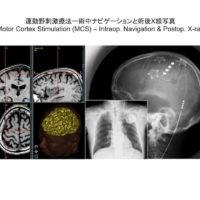当科の後期研修医、山本修輔先生の論文「成人もやもや病における無症候性微小出血に対する脳血行再建術の長期効果」が、Surgical Neurology International誌に掲載されました。
AMORE研究が実施されている現在、無症候性もやもや病に対する脳血行再建術の意義は不明ですが、経時的に増加する微小出血に対して脳血行再建術を実施したところ、その後七年間にわたって微小出血は増加せず、脳梗塞、頭蓋内出血の発作も生じませんでした。もやもや病における無症候病変に対する脳血行再建術の意義を考える上で貴重な症例と考えて報告させていただきました。
A Voyage to Depth of Neuroscience Vol. 36
Our resident, Dr. Shusuke Yamamoto and colleagues have published their case report, entitled “Long-term effect of surgical revascularization on silent microbleeds in adult moyamoya disease: A case report”.
Yamamoto S, Kuroda S
Long-term effect of surgical revascularization on silent microbleeds in adult moyamoya disease: A case report.
Sure Neurol Int 2017 Jun 5;8:99 doi: 10.4103/sni.sni_472_16. eCollection 2017.
BACKGROUND:
Recent development of magnetic resonance (MR) imaging has shown that silent microbleeds can be observed in a certain subgroup of adult patients with moyamoya disease. The patients with microbleeds are at higher risk for hemorrhagic stroke. However, the beneficial effects of surgical revascularization have not been established in asymptomatic patients with moyamoya disease. The authors present a case that underwent surgical revascularization for asymptomatic moyamoya disease because the number of silent microbleeds increases on serial MR examinations.
CASE DESCRIPTION:
A 61-year-old female was referred to our hospital because of nonspecific headache. T2-weighted MR imaging revealed silent microbleeds in the corpus callosum. She was diagnosed as moyamoya disease on cerebral angiography. She was conservatively followed up, however, de novo microbleeds developed in the right temporal and frontal lobes on follow-up MR imaging 6 months later. Superficial temporal artery to middle cerebral artery (STA-MCA) anastomosis and indirect bypass were performed on the right side to prevent hemorrhagic stroke. Postoperative course was uneventful. Follow-up cerebral angiography performed 10 months after surgery showed a marked development of surgical collateral through both direct and indirect bypass and the diminishment of moyamoya vessels. For the last 7 years after surgery, she is free from any cerebrovascular events, and serial MR examinations revealed no further development of de novo microbleeds.
CONCLUSIONS:
Surgical revascularization may be useful to reduce the moyamoya vessels and prevent cerebrovascular events in a certain subgroup of patients with asymptomatic moyamoya disease, although its universal benefits on asymptomatic moyamoya disease have not been established yet.









